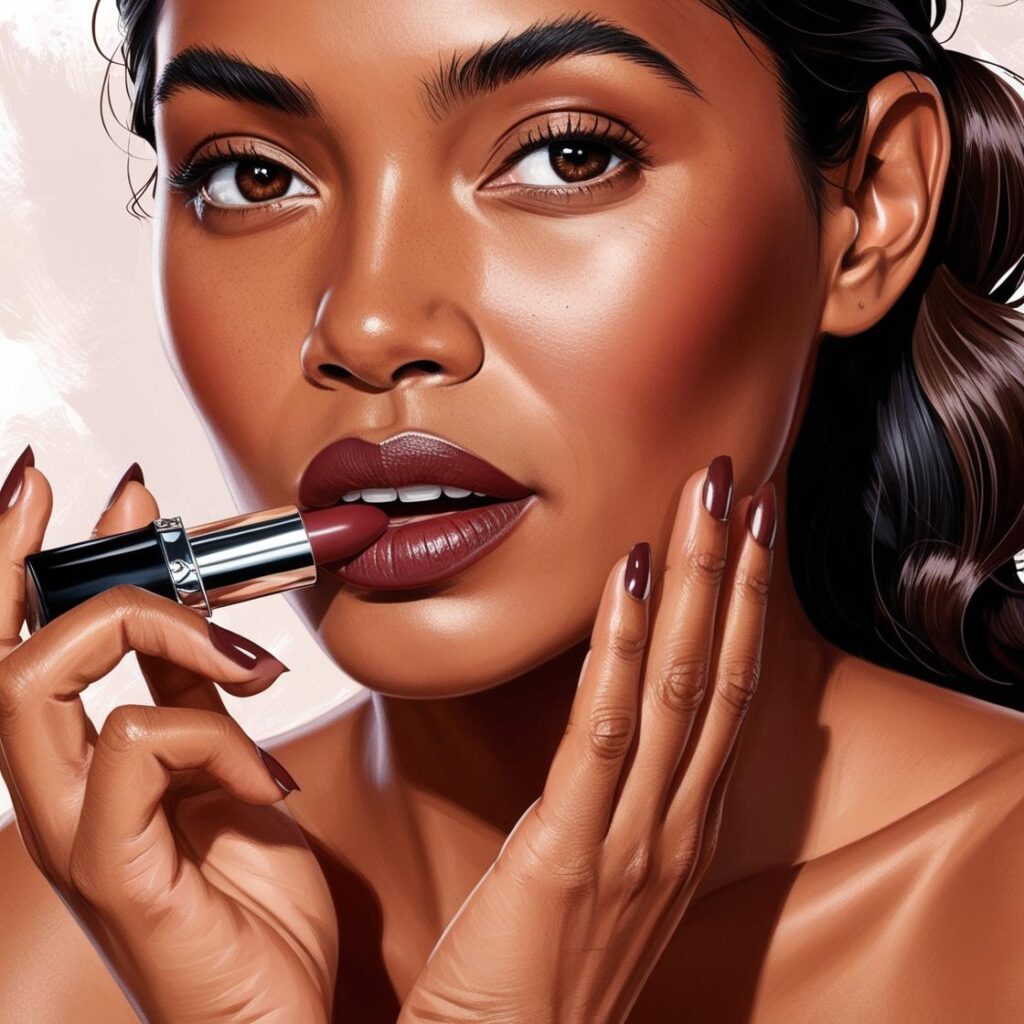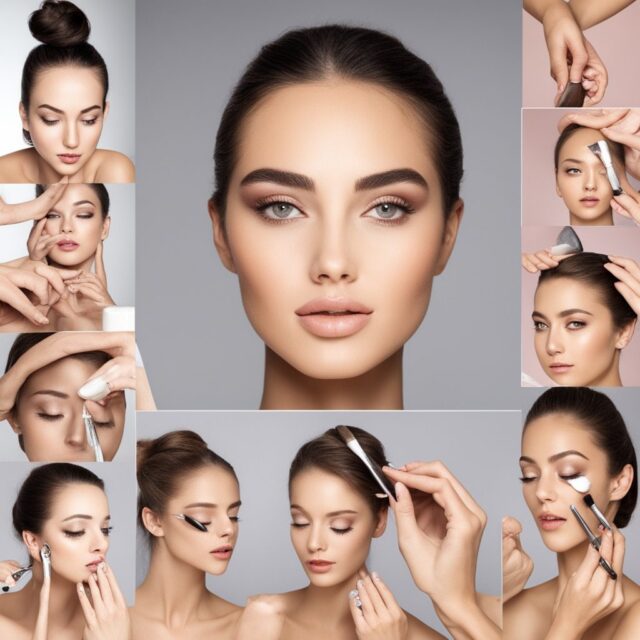Lip fillers have become one of the most popular means of obtaining action lips that aren’t too big but not too skinny. Whether they want a subtle enhancement or dramatic volume, millions choose this non-invasive cosmetic treatment every year. But one question arises after the procedure: Can I put lipstick on after lip fillers? The short answer is yes — but timing and caution matter.
Immediately following the treatment, your lips may be swollen or painful. “We generally recommend taking a break from makeup for a day or two so that you’re not potentially introducing bacteria into the skin and causing an infection,” explains the Canadian Board of Aesthetic Medicine.
During that period, you will want to be kind with aftercare: hydrate your lips with anointed balm, don’t touch the area, and stay away from anything that exfoliates.
If you are reapplying lipstick, use something hypoallergenic and non-irritating—with no harsh chemicals or fragrance. Creampots are just kinder than motte ones, which all get touchy skin. Harsh chemicals can strip away the beneficial oils that protect the skin over time.
Proper aftercare is not just about aesthetics—it’s vital to the healing process. Skipping steps can cause irritation, increase swelling, or impact results.
The Healing Process After Lip Fillers: What to Expect
Understanding the Immediate Aftercare Phase
Swelling, bruising or tenderness around the treated area is normal after lip fillers. This everyday occurrence usually reaches maximum levels within 24–48 hours as your body acclimates to the dermal filler. Super vulnerable: This is when your lips are most vulnerable — the injection sites are still healing, and disrupting the area (touching, pressure, make-up) can introduce bacteria, increasing infection risks. The first 24–48 hours are crucial: Tender care yields better outcomes. Stick to cold compresses for swelling, avoid strenuous activities, and follow your provider’s aftercare instructions, such as using antibiotic ointments if advised.
When Is It Safe to Apply Lipstick?
A common question is How soon after lip fillers can I wear lipstick? While many heal enough within 24–72 hours, timing varies based on individual recovery. The swelling should be significantly reduced, and no open wounds or scabs should be present. Check your lips’ readiness by gently tapping a clean finger on the offending area — if it feels tender or looks inflamed, wait. Once cleared, opt for hydrating, non-irritating lipsticks and avoid matte formulas that can dry out the skin. Sanitize applicators first, always!
Risks of Applying Lipstick Too Soon After Lip Fillers
Why Timing Matters
Applying lipstick too soon, and you’re going to ruin your results — and even have complications. One major concern is bacterial contamination. Lipstick tubes and applicators harbour germs, and introducing them to freshly injected lips increases infection risks—especially while tiny puncture wounds from needles still heal.
Additionally, many lipsticks contain chemicals, fragrances, or drying agents that irritate sensitive post-treatment skin, causing redness or allergic reactions.
Pressure from swiping or rubbing lipstick can also exacerbate swelling, move filler around, or prolong tenderness. Dermatologists and aestheticians recommend avoiding makeup for at least 24–48 hours because this is an essential window for initial healing.
As Dr Jane Miller, a board-certified dermatologist, notes: “Premature makeup use is a common lip filler aftercare makeup risk—patients don’t realize how delicate the area is post-treatment.”
Play It Safe for Optimal Results
Before reaching for your favourite shade, be sure any swelling has gone down and there is no broken skin. Once you’re cleared up, use hypoallergenic and moisturizing formulas, and avoid matte or long-wear lipsticks that slash moisture. Depending on use, apply serums again and sanitize applicators for minimized bacteria exposure. By sticking to the healing timeline, you’ll protect your lips from irritation — and get to rock a desired and healthy outcome.
How to Apply Lipstick Safely After Lip Fillers
Your enhanced lips deserve pampering after lip filler treatment, but applying lipstick requires extra care so as not to irritate or compromise results. Here’s how to keep your pucker just as beautiful and safe.
Choosing the Right Lipstick
Lips are particularly sensitive after filler, so look for hypoallergenic, non-comedogenic and fragrance-free formulas to help prevent irritation. Be careful with matte or long-wear lipstick since some drying ingredients in these formulations can only worsen tightness or flakiness. Instead, choose creamy, hydrating textures that move softly.
When searching for the best lipstick after lip fillers, consider trusted brands like Clinique’s Almost Lipstick (known for its soothing balm-like finish) or Burt’s Bees Hydrating Lip Crayon, which uses natural moisturizers. Neutrogena’s Hydro Boost Hydrating Tint is another excellent choice, combining hydration with subtle colour.
Application Tips
- Sanitize First: Wipe lipstick tubes with alcohol and use disposable applicators to prevent bacterial transfer.
- Be Gentle: Press or dab colour onto lips instead of swiping aggressively. This reduces pressure on swollen tissue and prevents filler displacement.
- Moisturize Prep: Apply a hydrating balm or hyaluronic acid serum beforehand. This creates a smooth base and combats dryness, which is common post-filler.
- Skip Shared Products: Avoid borrowing lipsticks to minimize germ exposure during the delicate healing phase.
You can safely enhance your new shape by choosing gentle products and adopting careful techniques without compromising results. Immediately seek medical attention if you notice unusual side effects such as redness or discomfort. With these steps, your lips will stay healthy, hydrated, and ready to flaunt their perfect shade!
Alternatives to Traditional Lipstick After Lip Fillers
Once you’ve plumped your pout with lip fillers, it’s all about protecting and keeping those results polished. Traditional lipstick will have to wait—here are safer, more gentle lip makeup after fillers options to sport during the sensitive healing phase.
Safer Options During Healing
- Hydrating Lip Balms with SPF: Opt for balms infused with healing ingredients like lanolin, shea butter, or ceramides. Look for SPF protection (e.g., Aquaphor Lip Repair + Sunscreen or Jack Black Intense Therapy Lip Balm) to shield sensitive lips from sun damage, which can worsen swelling or discolouration.
- Tinted Lip Oils or Glosses: These lightweight formulas add subtle colour without tugging or drying. Brands like Dior Lip Glow Oil or Fenty Beauty Gloss Bomb offer sheer, moisturizing shades. Avoid plumping glosses, though—their tingling ingredients (like cinnamon or menthol) can irritate healing tissue.
- Vaseline or Pure Lanolin: For zero irritation, stick to plain petroleum jelly or lanolin (like Lansinoh). They lock in moisture and create a protective barrier, ideal for the first 48 hours.
- Mineral-Based Tints: Brands such as Burt’s Bees Tinted Lip Balm or Ilia Color Block Lipstick use natural pigments and nourishing oils, minimizing chemical exposure.
What to Avoid
Avoid matte formulas, heavy lipsticks, and any product with fragrances, alcohol, or exfoliating acids until your lips are fully healed (usually 5–7 days). Plumping glosses are a no-go as their irritants can trigger inflammation.
Pro Tips: Always sanitize applicators before use and apply products with clean fingers or disposable tools. These gentle lip makeup after-filler alternatives will keep your lips healthy, hydrated, and camera-ready without compromising your filler results.
Key Takeaways
Healing after lip filler treatment is vital for achieving beautiful, long-lasting results. By sticking to gentle, hydrating products like fragrance-free balms or tinted oils — and avoiding irritants like matte formulas or plumping glosses — count yourself in charge of your investment and reduce the risk of loss.
Always ask your provider before introducing makeup back into your routine. They know your healing process better than anyone else, and their guidance will help you ensure your aftercare plan is tailored to your needs.
Further, following aftercare instructions isn’t a suggestion; avoiding complications, such as irritation or filler movement forward, is essential. Whether you choose balms with SPF or hypoallergenic glosses, good things take time, and product safety is non-negotiable.
Frequently Asked Questions Related to “Can I Put Lipstick On After Lip Fillers?”
Can I use lip liner after lip fillers?
Yes, but wait 24–48 hours post-treatment. Choose hypoallergenic lip liners with creamy formulas (e.g., Charlotte Tilbury or NYX Slide On) to avoid tugging on swollen lips. Outline gently without pressing—overlining isn’t advised until the swelling subsides. Always sanitize the liner tip first!
When can I put lipstick on after lip fillers?
Wait 24–48 hours post-fillers; ensure swelling subsides, use hypoallergenic lipstick, and consult your provider for personalized advice.
How to clean lips after wearing lipstick post-fillers?
On a cotton pad, use a fragrance-free micellar water or oil-based remover (like Bioderma Sensibio). Dab—don’t rub—to lift the product without irritating sensitive skin. Follow with a hydrating balm (e.g., La Roche-Posay Cicaplast) to restore moisture. Avoid alcohol-based wipes!
Can I wear lipstick the same day as fillers?
No. Most providers recommend waiting 24 hours before applying lipstick to prevent bacteria transfer or pressure on fresh injections. Stick to sterile balms (e.g., Vaseline) initially. Ask your provider during follow-up if unsure when to apply lipstick after fillers.
How soon can I use matte lipstick after fillers?
Hold off for 5–7 days. Matte formulas are drying and can cling to flaky skin common during healing. Opt for hydrating tints first—your lips will thank you!
What’s the safest way to exfoliate lips post-fillers?
Skip scrubs for two weeks! Instead, soften flakes with a damp cloth or apply a lactic acid balm (e.g., Laneige Lip Sleeping Mask) to dissolve dead skin overnight gently.


